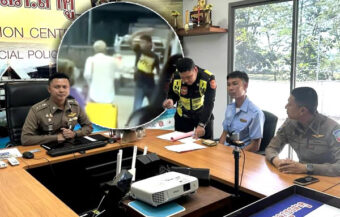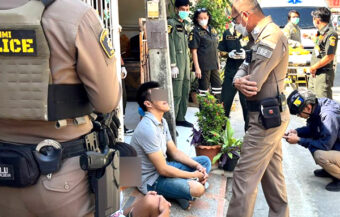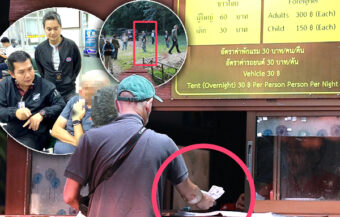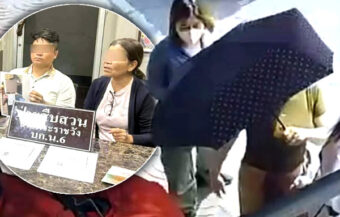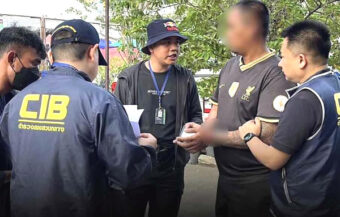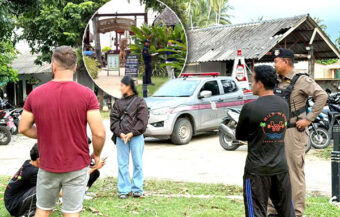Thailand’s tourism is reeling in 2025 with arrivals down 6.56% after border clashes with Cambodia, widespread travel warnings and a March earthquake. Trade disruptions and hotel cancellations deepen the crisis, leaving the industry desperate for stability.
The Thai-Cambodian border clash in late July dealt a brutal blow to Thailand’s already crumbling foreign tourism industry in 2025, coming just months after a damaging earthquake shook Bangkok. These events, alongside a January scandal involving the abduction of Chinese nationals by scam gangs in Myanmar, have created relentless negative headlines that drive tourists away. Latest figures show tourist arrivals have plunged 6.56% compared to last year, while vital cross-border trade with Cambodia—lifeblood for many struggling local traders—has ground to a halt, deepening economic strain. Tourism operators are now demanding one thing from the government: stability. Without it, Thailand’s tourism sector faces a bleak and declining future.

Thailand’s crucial foreign tourism sector is showing renewed signs of stress. According to the Ministry of Tourism and Sports, international arrivals dropped by 6.56% from January 1 to August 3 compared to the same period in 2024. That means around 19.57 million tourists entered Thailand during the period.
Although China remained the largest market with 2.73 million visitors, the overall decline is troubling. Notably, the downward trend has worsened since the mid-year point. By June 29, arrivals had only fallen 4.56% compared to 2024. The accelerating decline raises concern.
Thailand’s foreign tourist arrivals fall 6.56% by early August as decline accelerates from mid-year
Consequently, the Finance Ministry cut its full-year forecast from 36.5 million to 34.5 million arrivals. This adjustment comes amid heightened political tension and border instability. In 2019, before the pandemic, Thailand welcomed nearly 40 million foreign visitors. It has yet to regain that benchmark.
The sudden military clash with Cambodia in late July has worsened the situation. For four days, border fighting between the two countries shocked the region. Unexpectedly, hostilities spread onto Thai soil, alarming local populations.
Understandably, this spurred global reaction. Over 25 countries issued travel advisories, urging caution or limiting travel to Thailand’s eastern provinces. Among them, the United States, Australia, Japan, and the Netherlands escalated their warnings significantly.
The U.S. banned non-essential travel to the Thai-Cambodian border. Australia cited risks of terrorism and martial law in Bangkok and Phuket. These warnings have shaken Thailand’s image abroad.
July’s Thai-Cambodian border clash sparks worldwide travel warnings, worsening tourism outlook
The impact has been immediate and sharp. More than 5,000 hotel bookings were cancelled nationwide due to safety concerns. Minister of Tourism and Sports, Sorawong Thienthong, estimated the monthly economic loss at ฿3 billion or $92.6 million.
Tourism across the seven border provinces has been heavily disrupted. These provinces include Ubon Ratchathani, Sisaket, Surin, Buriram, Sa Kaeo, Chanthaburi and Trat. Many group tours have been cancelled entirely.
In Ubon Ratchathani, multiple hotels closed temporarily. By August 4, only 30% of bookings remained active. Around 70% of hotel guests were journalists or humanitarian workers. Authorities are preparing evacuation plans for over 40,000 residents.
In Sisaket, the Chong Sa-Ngam border crossing is under strict control. Tourism has slowed drastically. Most bookings were cancelled, and hotels are operating at reduced capacity. Half of the guests are now aid workers and media.
Surin has seen border hotels either close or operate with limits. The Enduro Race motorbike event has been postponed. However, some Thai visitors still travel to temples near the border to support soldiers.
Border provinces endure massive tourism cancellations and hotel closures amid conflict concerns
In Buriram, some hotels suspended operations entirely. Others now house evacuees. Major attractions like Phanom Rung Historical Park and Muang Tam Sanctuary remain closed. Events at the Chang International Circuit have also been put on hold.
Phanom Rung Historical Park has remained shut since July 26 due to safety issues. Locals and tourists have been urged to avoid the area.
Sa Kaeo has been especially hard hit. In Aranyaprathet district, occupancy dropped to zero. Muang district saw an 80% decline. Thai authorities banned tourists, gamblers, and entertainment workers from entering Cambodia.
In Chanthaburi, hotel bookings are down by 80%. New checkpoint hours are slowing cross-border trade. While Cambodian workers continue entering Thailand legally, Cambodia has banned imports of Thai produce.
Key border provinces see historic tourism drops, hotel shutdowns, and trade disruptions amid crisis
Trat is under martial law in some areas. Khao Saming district has seen clashes and emergency evacuations. Island tourism has also suffered. Koh Chang, Koh Mak, and Koh Kood have seen cancellations of 10–60%.
While the crisis remains localised, it has damaged Thailand’s global reputation. Online sentiment reflects this clearly. According to a TAT social listening analysis, negative posts rose from 6.8% to 11.3% in one week. Simultaneously, positive mentions fell from 33.3% to 21.3%.
Instead of highlighting travel experiences, many posts now focus on tension, risk and violence. This shift impacts how prospective travellers view Thailand.
Meanwhile, the border crisis has affected more than tourism. Cambodia-Thailand border trade has come to a near halt. The border economy is worth at least $92.6 million per month. That figure excludes informal and undeclared trade.
Martial law areas see island tourism collapse, while negative online sentiment surged after conflict
Thailand’s black market is tightly linked to cross-border trade. Rong Kluea Market in Sa Kaeo, once a tourist hotspot, now lies nearly empty. Cambodian labourers have also begun returning home in large numbers.
Because of this, labour shortages are hitting key sectors like agriculture, logistics and construction. The disruption comes at a delicate time for Thailand’s post-pandemic recovery.
Additionally, the March earthquake has added to the perception of instability. Even though it caused limited damage, it signalled environmental vulnerability. Some tourists may now see Thailand as disaster-prone and politically risky.
Minister Sorawong believes recovery is still possible. He points to encouraging signs from Western and European markets. Winter bookings from these regions remain strong—for now.
However, even the Tourism Authority concedes that 2025 will likely fall short of 2024 in arrivals. The goal of attracting 1 million tourists from the Middle East and Africa also looks doubtful.
Cross-border trade collapse and labour shortages worsen economic woes after earlier earthquake fears
Nevertheless, the country’s long-term tourism prospects remain intact. Thailand has partially recovered from crises before, including floods, political unrest and COVID-19. What matters now is consistency and calm.
At the same time, the kingdom has never quite recovered from the total shutdown of the country’s airspace in April 2020. That emergency appears to have permanently damaged the kingdom’s foreign tourism industry.
Right now, the government must act quickly to restore order and reassure international partners. Tourists crave predictability. Travel decisions depend on perceived safety and political stability.
Therefore, Thai officials are focusing on crisis management. Local tourism officers are on standby. They work closely with tourist police and emergency services to assist foreign nationals.
Tourism chief rebuts distorted scam centre reports linked to Taiwanese tourists. Now, a new, safer order
Tourism minister orders all Bangkok hotels surveyed as this Friday’s shocking Earthquake fallout mounts
With tourism contributing over 12% to GDP and over 20% of employment, the stakes are high. The impact is not limited to hotels and airlines. Restaurants, transport providers, markets, and entertainment venues are also suffering.
Thailand’s recovery depends on facts, not fear. If the government can ensure security and transparency, arrivals will improve. Yet, without swift action, uncertainty will linger.
As tensions ease, officials hope to reopen closed attractions and resume normal tourism operations. The coming months will be decisive. With careful strategy, Thailand can regain traveller confidence.
Until then, it must weather yet another turbulent chapter in its tourism story.
Join the Thai News forum, follow Thai Examiner on Facebook here
Receive all our stories as they come out on Telegram here
Follow Thai Examiner here
Further reading:
Thaksin does not rule out joining talks in US as Thai team finalises plans. They fly out on Thursday
Trump’s remaking of World trade, if it works, will force Thailand to decide between the US and China
US offers a 90-day tariff pause but Thailand must move faster as it already faces shaved GDP in 2025
PM addresses the nation in shock over last week’s earthquake and this week’s Trump tariff bombshell






